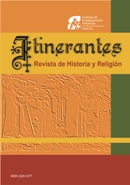Tempranas formas de evangelización franciscana en el Rio de la Plata: el recurso del milagro en la reducción de Itatí. Primera mitad del siglo XVII
DOI:
https://doi.org/10.53439/revitin.2024.1.06Palabras clave:
franciscanos, evangelización, milagros, reducciónResumen
En este artículo nos proponemos analizar el recurso del milagro como una de las tempranas formas de evangelización que implementó la orden franciscana entre los indígenas guaraníes. Nos preguntamos particularmente cuál fue la implicancia de recurrir a supuestos prodigios divinos en la reducción de Itatí, que fue establecida en la jurisdicción de la ciudad de Corrientes, aproximadamente a 70 kilómetros al noreste de la misma, a comienzos del siglo XVII.
Los franciscanos procuraron la evangelización y la reforma de las costumbres de los indígenas recurriendo al milagro como fundamento de credulidad, lo cual contribuyó a la consolidación de una experiencia de gobierno eclesiástico; y cumplió una función confirmativa del orden sociopolítico y religioso establecido. Se articuló con los canales principales de acción misional, la predicación y el uso de las imágenes. En Itatí se veneró una imagen de la virgen tenida por taumaturga.
Para este trabajo recurrimos a fuentes documentales franciscanas de la primera mitad del siglo XVII, editas e inéditas, que nos permitieron observar el temprano accionar misional entre los indígenas del Río de la Plata. Especialmente, informes y libros de milagros realizados de Itatí; las crónicas franciscanas generales provinciales; las informaciones de servicios de los frailes.






























